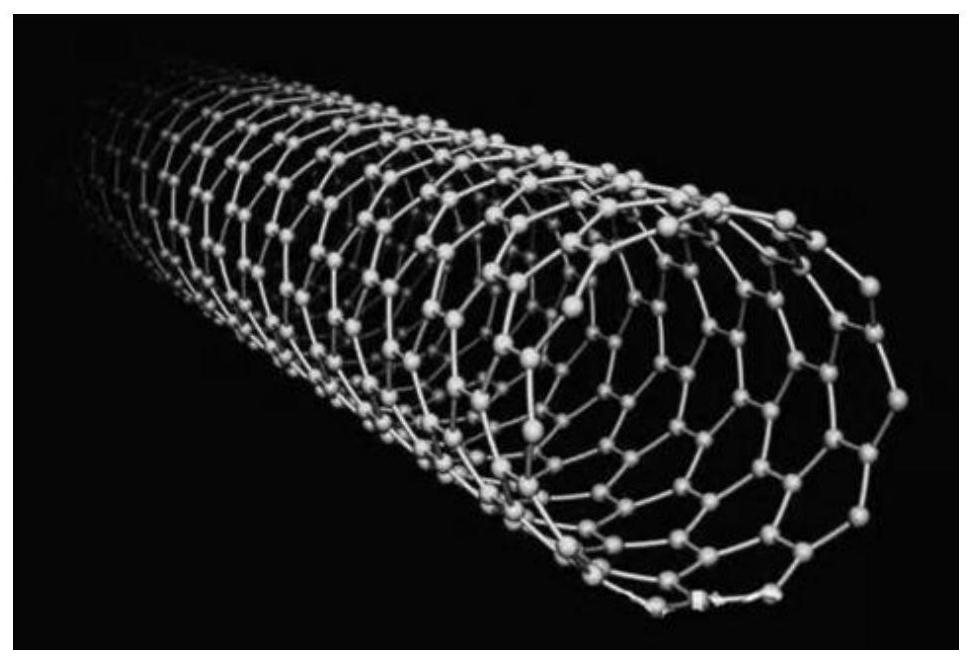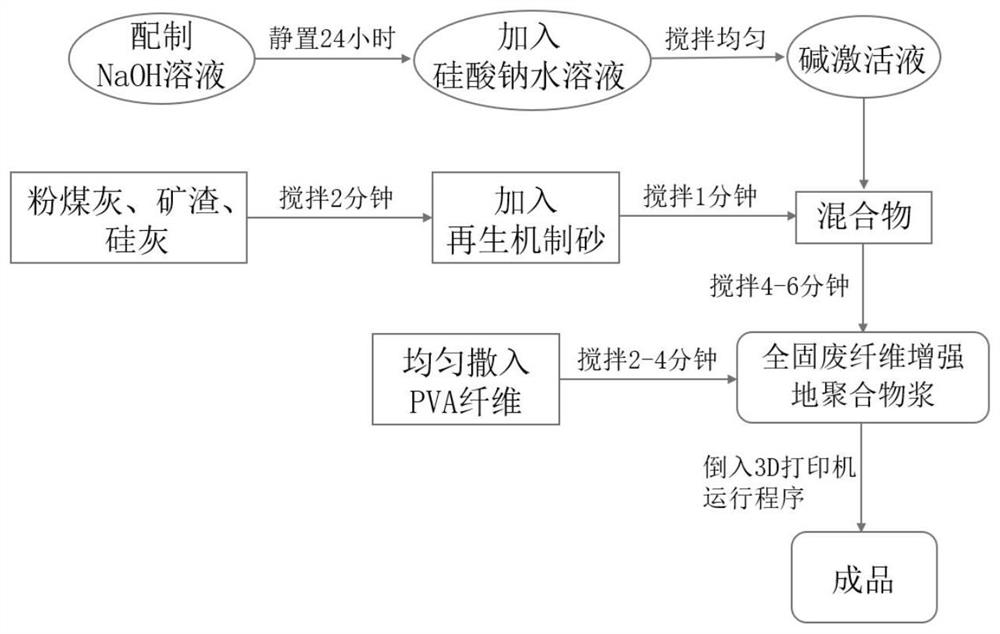All-solid waste fiber reinforced geopolymer composite material suitable for 3D printing technology
A 3D printing and geopolymer technology, applied in the direction of additive processing, cement production, etc., can solve the problems of high cost and unfavorable application of nano-graphene, and achieve the effect of improving sustainability, considerable ductility, and dense and smooth surface
- Summary
- Abstract
- Description
- Claims
- Application Information
AI Technical Summary
Problems solved by technology
Method used
Image
Examples
Embodiment 1
[0048] According to the number of parts by mass, raw materials are weighed: 25 parts of aggregate, 75 parts of cementitious material (in terms of mass fraction, 30% of fly ash, 60% of slag, 10% of silica fume), PVA fiber (2% of volumetric dosage) ), carbon nanotubes (2% of aggregate and cementitious material gross mass), alkali activator (add 650mL alkali activator in the mixture of every kilogram aggregate and cementitious material);
[0049] Wherein the preparation method of the alkali activator: dissolve the NaOH solid in deionized water in proportion to prepare a 6mol / L sodium hydroxide solution, place it at room temperature for 24 hours until the solution is cooled to room temperature, add an aqueous solution of sodium silicate in a mass ratio of 3:7 ( Na 2 O nSiO 2 , n=1.5), stir evenly to obtain alkali activation solution for subsequent use;
[0050] The preparation method is as follows ( figure 2 Schematic flow chart for the preparation of concrete composite materi...
Embodiment 2
[0055] With embodiment 1, the difference is that according to the number of parts by mass, raw materials are weighed: 25 parts of aggregate, 75 parts of cementitious material (in terms of mass fraction, fly ash 30%, slag 60%, silica fume 10%), PVA Fiber (2% of volume dosage), carbon nanotube (2% of aggregate and cementitious material total mass), alkali activator (add 650mL alkali activator in the mixture of every kilogram of aggregate and cementitious material);
[0056] Wherein the alkali activator preparation method: NaOH solid is dissolved in deionized water in proportion to prepare the sodium hydroxide solution of 8mol / L, place at room temperature for 24 hours until the solution is cooled to room temperature, add sodium silicate aqueous solution by 3:7 mass ratio ( Na 2 O nSiO 2 , n=1.5), and stir evenly to obtain an alkali activation solution for later use. The initial setting time of the slurry was determined to be 10 minutes; the compressive strength of the product d...
Embodiment 3
[0058] With embodiment 1, the difference is that according to the number of parts by mass, raw materials are weighed: 25 parts of aggregate, 75 parts of cementitious material (in terms of mass fraction, fly ash 30%, slag 60%, silica fume 10%), PVA Fiber (2% of volume dosage), carbon nanotube (2% of aggregate and cementitious material total mass), alkali activator (add 650mL alkali activator in the mixture of every kilogram of aggregate and cementitious material);
[0059] Wherein the preparation method of the alkali activator: the NaOH solid is dissolved in deionized water in proportion to prepare a 10mol / L sodium hydroxide solution, placed at room temperature for 24 hours until the solution is cooled to room temperature, and added in a 3:7 mass ratio of sodium silicate aqueous solution ( Na 2 O nSiO 2 , n=1.5), and stir evenly to obtain an alkali activation solution for later use. The initial setting time of the slurry was determined to be 10 minutes; after 28 days of natur...
PUM
| Property | Measurement | Unit |
|---|---|---|
| particle diameter | aaaaa | aaaaa |
| density | aaaaa | aaaaa |
| length | aaaaa | aaaaa |
Abstract
Description
Claims
Application Information
 Login to View More
Login to View More - R&D
- Intellectual Property
- Life Sciences
- Materials
- Tech Scout
- Unparalleled Data Quality
- Higher Quality Content
- 60% Fewer Hallucinations
Browse by: Latest US Patents, China's latest patents, Technical Efficacy Thesaurus, Application Domain, Technology Topic, Popular Technical Reports.
© 2025 PatSnap. All rights reserved.Legal|Privacy policy|Modern Slavery Act Transparency Statement|Sitemap|About US| Contact US: help@patsnap.com


